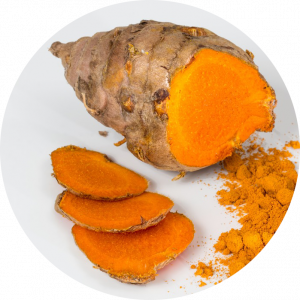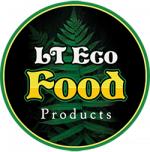Focus
Why Sri Lanka is unique for Eco Foods?
 Indigenous and traditional foods of Sri Lanka inherit a long history and unique traditions continued from time immemorial in several thousands of years. Sri Lankan food tradition is strongly inter-wound with the nutritional, health-related, and therapeutic reasoning of the food ingredients and the methods of preparation. The diverse culinary traditions and preparations reflect multipurpose objectives combining in-depth knowledge of flora and fauna in relation to human well-being and therapeutic health benefits. Trans-generational knowledge dissemination related to indigenous and traditional food is now limited due to changing lifestyles, dwindling number of knowledge holders, and shrinking floral and faunal resources. Awareness on the relationship between non-communicable diseases and the diet has garnered the focus on traditional ingredients and foods by the consumers and major food producers in Sri Lanka.
Indigenous and traditional foods of Sri Lanka inherit a long history and unique traditions continued from time immemorial in several thousands of years. Sri Lankan food tradition is strongly inter-wound with the nutritional, health-related, and therapeutic reasoning of the food ingredients and the methods of preparation. The diverse culinary traditions and preparations reflect multipurpose objectives combining in-depth knowledge of flora and fauna in relation to human well-being and therapeutic health benefits. Trans-generational knowledge dissemination related to indigenous and traditional food is now limited due to changing lifestyles, dwindling number of knowledge holders, and shrinking floral and faunal resources. Awareness on the relationship between non-communicable diseases and the diet has garnered the focus on traditional ingredients and foods by the consumers and major food producers in Sri Lanka.
 Indigenous and traditional foods of Sri Lanka present a perfect blend of cultural diversity with human wisdom that has been evolved through generations in establishing a cultural heritage and an identity. In the Sri Lankan culture, food is treated with the highest gratitude, respect, and generosity, expressed by sharing and offering to fellow humans, animals as well as the divine powers. Sri Lankans love to share foods with neighbors, family, and friends; house visits are always accompanied with bundles of food items. Some foods and the preparation know-how are specialties of the locality. Trans-generational knowledge transmission of food and food ingredients is inter-woven with regular maintenance of healthy life, cultural legacy, and religious concepts of the ethnicities of the land and have been the key to sustain a traditional food culture in Sri Lanka; evidence are found in written literal work and archeological sources as well as folklore.
Indigenous and traditional foods of Sri Lanka present a perfect blend of cultural diversity with human wisdom that has been evolved through generations in establishing a cultural heritage and an identity. In the Sri Lankan culture, food is treated with the highest gratitude, respect, and generosity, expressed by sharing and offering to fellow humans, animals as well as the divine powers. Sri Lankans love to share foods with neighbors, family, and friends; house visits are always accompanied with bundles of food items. Some foods and the preparation know-how are specialties of the locality. Trans-generational knowledge transmission of food and food ingredients is inter-woven with regular maintenance of healthy life, cultural legacy, and religious concepts of the ethnicities of the land and have been the key to sustain a traditional food culture in Sri Lanka; evidence are found in written literal work and archeological sources as well as folklore.
 Archeological findings, ancient travelers’ records, and early world maps are living evidence for the significance of this island in geo-politics and sea trade since ancient times. Elements of Afro-Arabic, Central Asian, European, South-east Asian, and Oriental food cultures that followed with the trade activities, royal marriages, and invasions have been customized to align with the habits, the culture, and the palate of island inhabitants while keeping the indigenous and traditional food culture in a nutshell. A significant geographic differentiation can be seen in traditional foods aligning with the eco- and biodiversity of the island. Indigenous and Ayurveda medicine holds a strong base and provides recommendations with clear and defined identity on the ingredients, preparation methods, and consumption in order to maintain a healthy life while preventing and treating major diseases and minor ailments. Traditionally, the primary knowledge holders are the community elders (both male and female) and indigenous medical practitioners who are well versed about the local flora and fauna, their medicinal values, and the ingredients and preparations
Archeological findings, ancient travelers’ records, and early world maps are living evidence for the significance of this island in geo-politics and sea trade since ancient times. Elements of Afro-Arabic, Central Asian, European, South-east Asian, and Oriental food cultures that followed with the trade activities, royal marriages, and invasions have been customized to align with the habits, the culture, and the palate of island inhabitants while keeping the indigenous and traditional food culture in a nutshell. A significant geographic differentiation can be seen in traditional foods aligning with the eco- and biodiversity of the island. Indigenous and Ayurveda medicine holds a strong base and provides recommendations with clear and defined identity on the ingredients, preparation methods, and consumption in order to maintain a healthy life while preventing and treating major diseases and minor ailments. Traditionally, the primary knowledge holders are the community elders (both male and female) and indigenous medical practitioners who are well versed about the local flora and fauna, their medicinal values, and the ingredients and preparations
Geographical and climatic perspective of Sri Lanka
Geo-positioning and climate of the country are highly relevant to the available food sources and existence of various food traditions. Sri Lanka is a tropical island positioned between 5° 55′ and 9° 51′ North latitudes and 79° 42′ and 81° 53′ East longitudes in the south of the Indian peninsula. The island and area of 65,610 km2 bears distinguishable elevation. Rainfall (wet, intermediate, and dry zones), and vegetation (closed rainforest, more open intermediate tropical forest, and open grassland) zones The terrain of the island is mostly low, flat to rolling plains with mountains in the South-central area. The island coastline is 1,340 km long and inland water bodies cover 2,905 km2. Several offshore islands account for 342 km2 area. The island receives monsoonal, convectional, and depressional rains annually, with < 900 mm in the driest areas (North-western and South-eastern regions) to > 5000 mm in the wettest areas (Western slopes and Central highlands). Mean annual temperature (MAT) varies between 26.5 °C and 28.5 °C, with the altitudes > 1800 m marking MAT of 15.9 °C, and the coldest temperatures in January and the warmest temperatures in April and August 2 Of the total land area, ~ 19% is arable, and agriculture accounts for ~ 44% of the workforce and 12% of the GDP.
(Source; Journal of Ethnic Foods, Sri Lanka)

